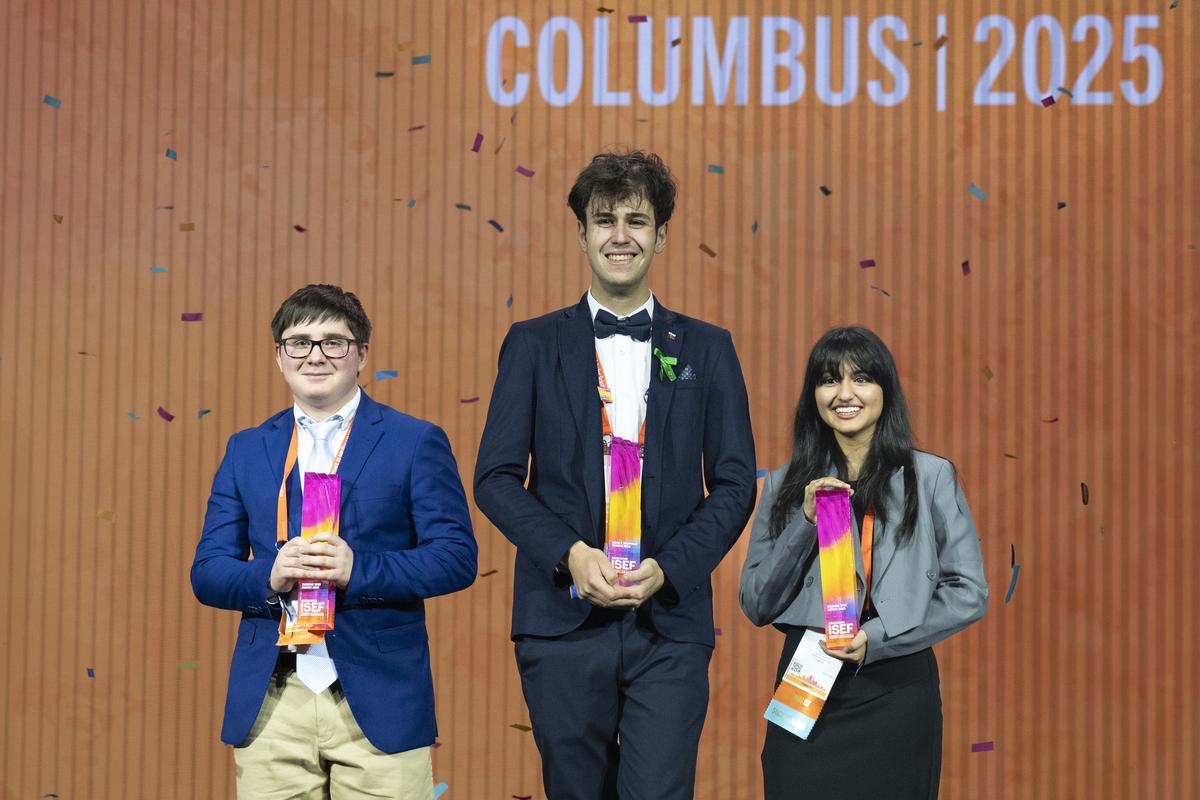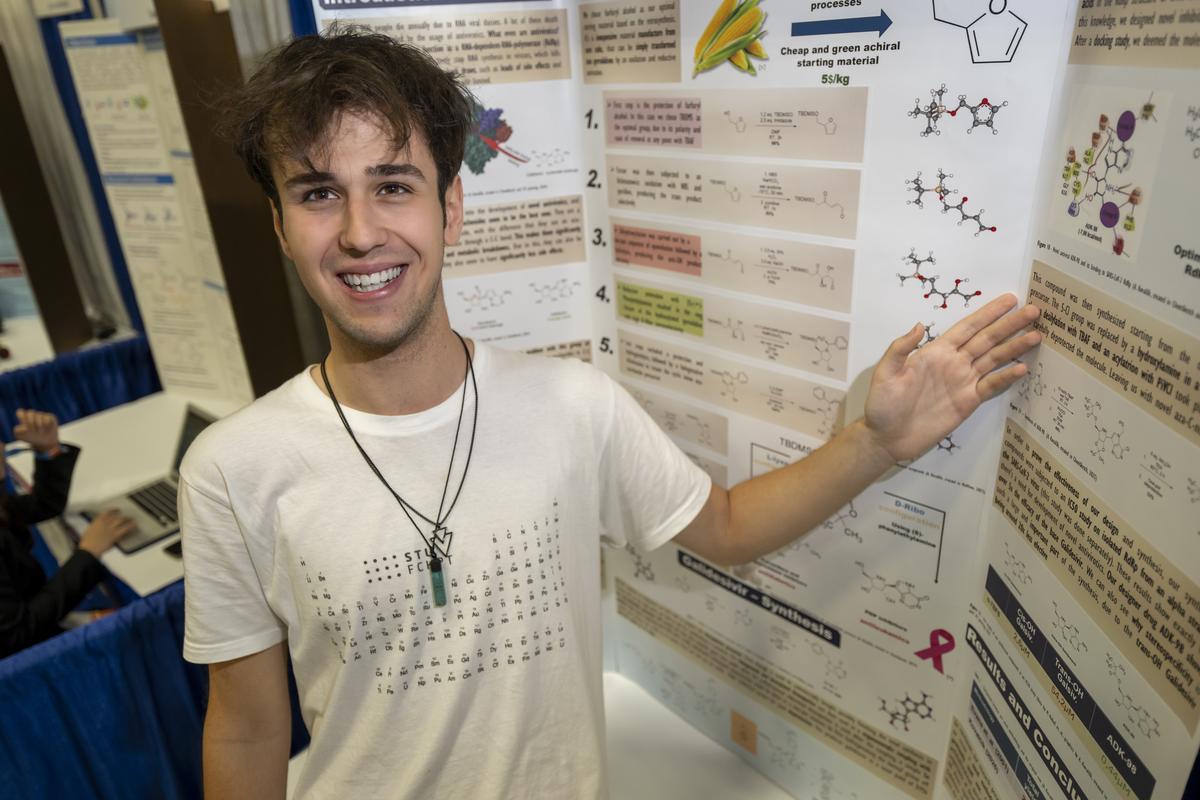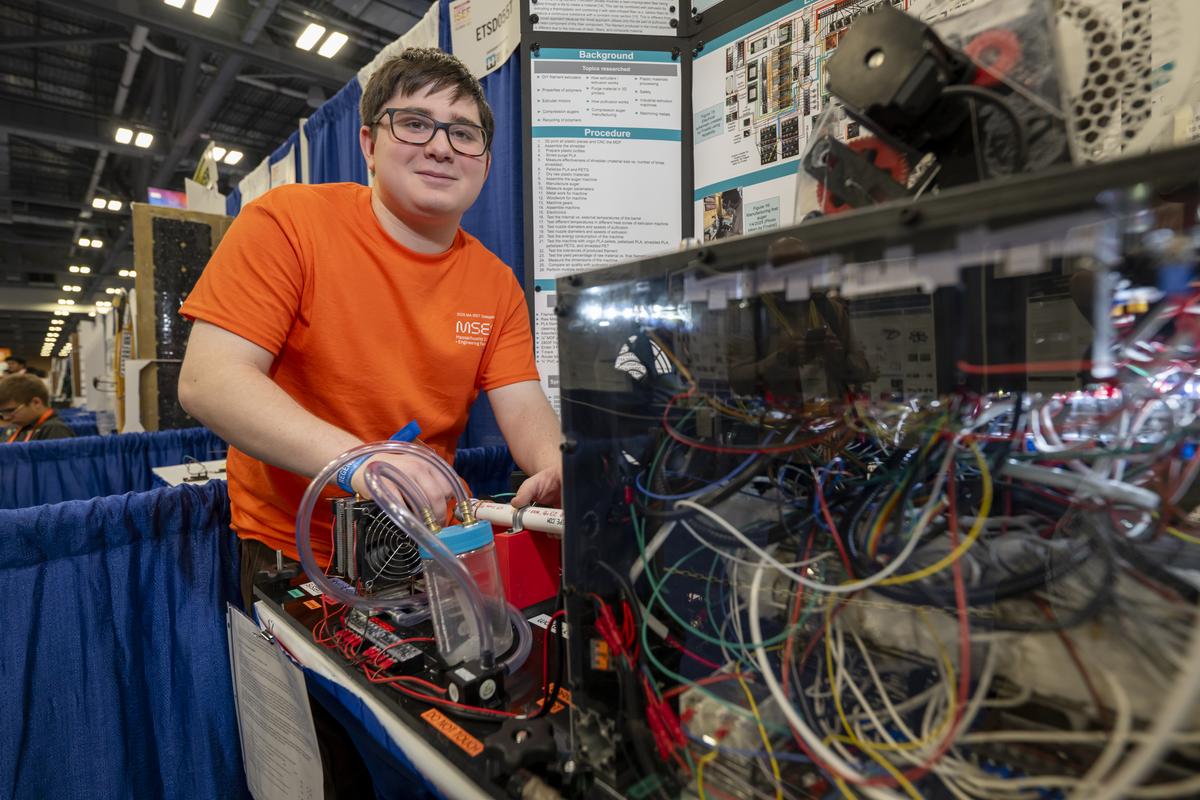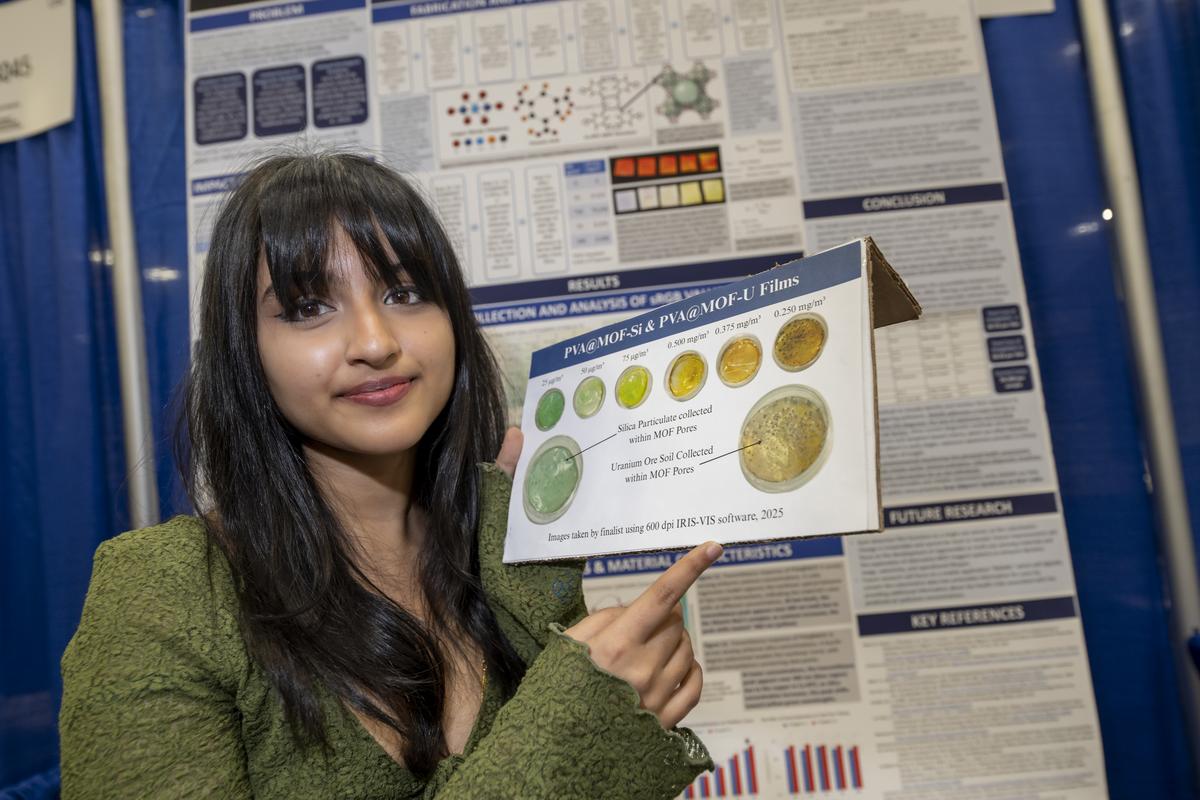In mid-May, the 2025 International Science and Engineering Fair (ISEF) was held in Columbus, Ohio. It’s the world’s largest science contest for students who haven’t gone to college yet. The grand prize went to a student from Slovakia for a new way of making a medicine. Other prizes went to creative projects solving real-world problems.
The ISEF is a science contest for students in 9th through 12th grade. It’s meant to encourage students to explore science, technology, engineering, and math (STEM). The contest is open to students from around the world, and is a special opportunity for students to show off their science projects. This year, about 1,700 students from 48 US states and over 60 other countries took part.

(Source: Society for Science.)
This year was the 75th year for the ISEF, which was first held in 1950. It’s organized by the Society for Science, with support from the drug company, Regeneron. There are many prizes, but the main prize is the $100,000 George D. Yancopoulos Innovator Award.
The winner of this year’s grand prize was 19-year-old Adam Kovalčík from Slovakia. Adam won with a project that created a new way of making a medicine for fighting viruses. The medicine, called galidesivir, may work well against many different viruses. But the medicine is currently expensive and hard to make.

(Source: Society for Science.)
Adam’s new method for making the drug was much simpler and cheaper. He figured out a way to make the medicine from corn husks (the leaves covering an ear of corn). His method uses 10 steps instead of 15, it’s much faster, and makes far more of the drug. Adam’s new method could cut the cost of galidesivir by over 80%.
Adam was thrilled to win. “I did not expect such a huge international competition to be won by someone from a small village in a small European country,” he told Business Insider. “So it was just pure shock.”

(Source: Society for Science.)
Two students from the US, Benjamin Davis and Siyaa Poddar, each won a $75,000 Regeneron Young Scientist Award.
Benjamin, 16, is from Wrentham, Massachusetts. He created a system for recycling the waste plastic created during 3D printing so that it can be used again. Benjamin designed and built his plastic recycling machine in his home workshop. The machine is better and faster than similar recycling machines and costs about 90% less. He has also tested recycling other waste plastic with his machine.

(Source: Society for Science.)
Sixteen-year-old Siyaa Poddar from Chandler, Arizona won her award for creating a system that detects toxic dust in the air. In the Southwest US, toxic dust from old mines is a serious concern, and has caused health problems for many. Siyaa created a cheap chemical system that changes color when it comes in contact with toxic dust. Her system makes it easy to test for toxic dust in the air.
Many hard-working and talented young students won other awards in a wide range of science and technology fields. In all, the contest offered more than $9 million in prizes.
